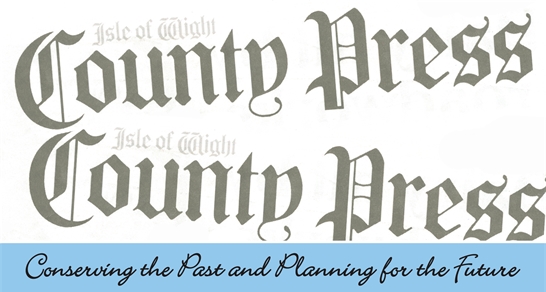November 2020
The Island Local List
What is a Listed Building? Most people think of those magnificent structures like Osborne House or Carisbrooke Castle, national treasures, looked after by English Heritage.
The National Trust look after other important listed structures, such as Bembridge Windmill, the Needles Batteries , or Newtown Town Hall.
But there are many ordinary buildings listed on the Island, around 2,500 of them, all giving the Island its character. They range from simple cottages built of Island stone or flint, churches of many periods, to grand Regency town houses and Victorian homes. All have been recognised for their special architectural or historic interest.
Whether Grade 1, 2* or 2, all these buildings, both inside and out, are protected in law. Any alterations, even minor ones, must seek Listed Building Consent before work starts. Thankfully most owners comply with the regulations.
Only a very few owners leave their Listed building to go to rack and ruin, become an eyesore and fall down. We all see these problem buildings, but even fines or imprisonment seem to be no deterrent, when a company can go into liquidation or wriggle out of their responsibilities through legalities.
Remember, owning a listed building means holding it in trust to protect it for generations to come.
The lowest grade of Listing is the Local List. Initially these were classed as Grade 3 structures, until that category was disbanded. The public were then invited to submit even more Local Heritage Assets that they felt valuable in the retention of local character, and that the Island Conservation Team should consider. Often it is the smaller individual unusual structures in public view that add character and interest, such as the Transformer house for Osborne Stable Block, or Osborne Naval College Engineering Lecture rooms.
Osborne Naval College Engineering Lecture rooms.
Forms on which to propose a new Local List entry are available on line, or contact the Isle of Wight Planning Office. Nominations then go through a lengthy procedure before being put forward for adoption by the IW Planning Committee.
A proposed Heritage Asset should represent the best of the non-statutory listed buildings and meet at least two out of five criteria. These are:- Historic Interest; Architectural, Artistic & Design Merit; Survival; Townscape merit; and Archaeological interest. Each section has several categories within it. Survival, for instance, considers if the structure remains in a substantial and recognisable form, whether it retains its historic features or whether it has rarity value on the Island.
Every Planning Application is checked against the national listing and also the Local List. While protection is not so severe for the Local List, changes proposed will be more carefully considered.
If there is a need to gain national listed status for a building, it will rarely be considered by the Department for Culture, Media and Sport unless it is already on the Local List, a positive reason to keep the Local List up to date.
Are there any structures that you think may be deserving of entry on the Island Local List?
Sarah Burdett
[Go Back]

